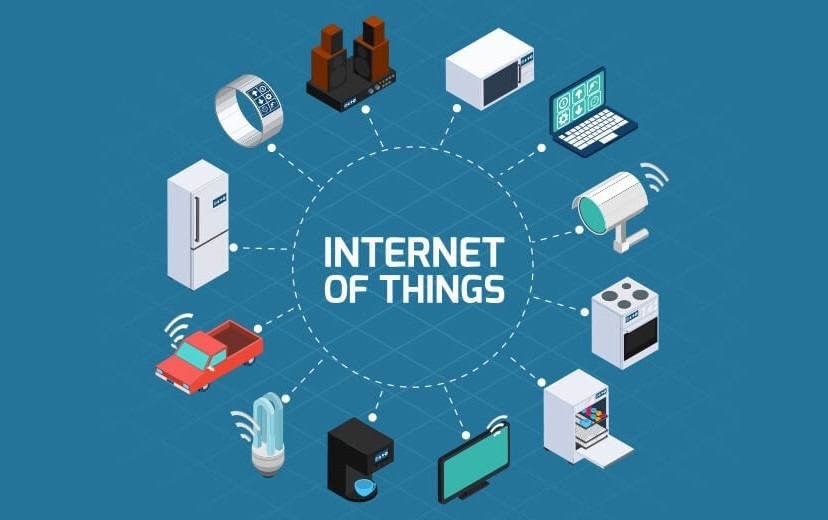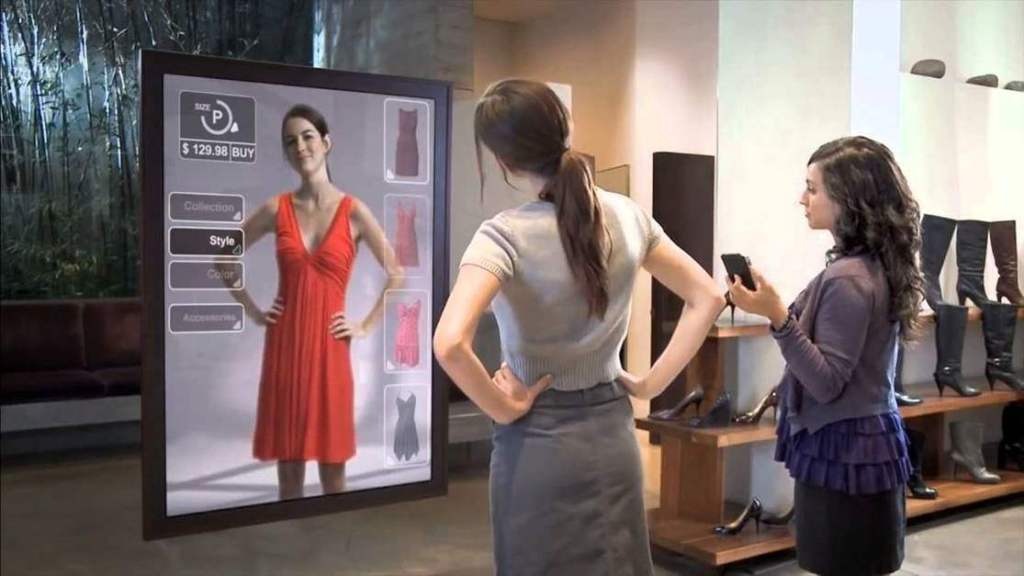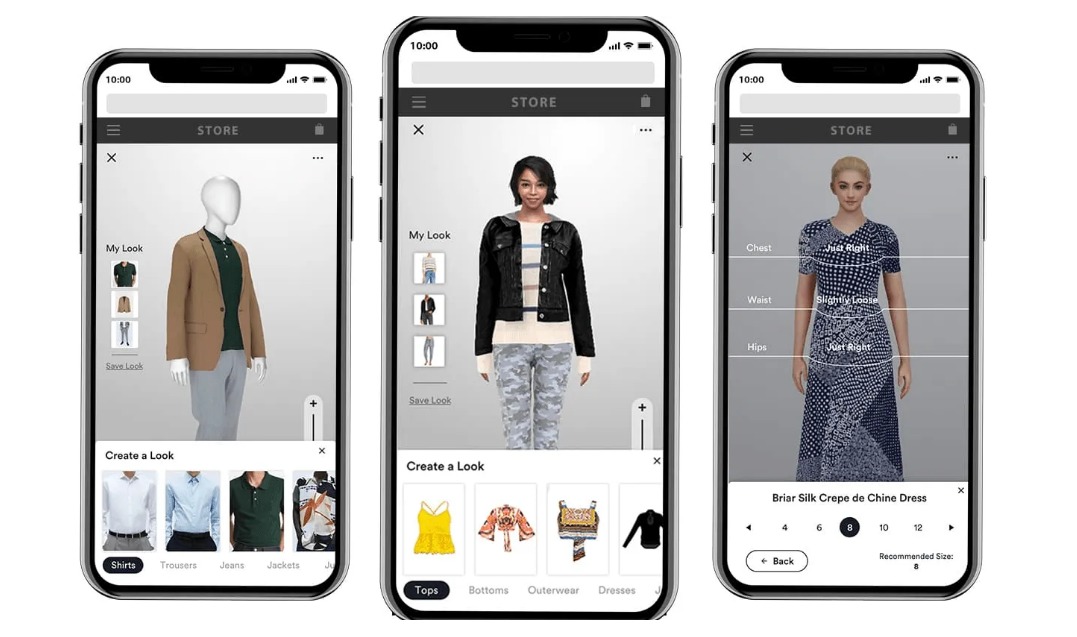The world is witnessing a significant change in the fashion industry, and to help businesses understand and keep up with the new trends, we have compiled a list of the top 9 technology trends shaping the future of fashion. These trends will help businesses maintain their competitiveness and position in the market. Let’s explore the article below to know more details!
The Rise of Artificial Intelligence AI
When it comes to the top technology trends shaping the future of fashion, AI is a must. Artificial Intelligence (AI) is transforming the fashion industry with many improvements, from collecting information, predicting consumer trends to providing personalized clothing designs. This tool has almost replaced humans in detecting the right products and the ideal time to reach customers.
A study has shown that the size of AI in the fashion market will increase from $0.91 billion in 2023 to $3.72 billion in 2027 at a compound annual growth rate of 41.6%.
Applying AI can help designers create new fashion styles faster and more efficiently thanks to automated workflows, minimizing the need for human involvement, improving product detail and accuracy.
Not only does it streamline the manufacturing process, advances in AI also help improve service quality and profitability. Customer service is a particularly important factor for every fashion business today, and AI is enhancing it with solutions such as chatbots, interactive screens, automated care, etc.

Take Stitch Fix, a San Francisco-based company that now delivers fashion products to customers with the help of online stylists and AI.
Stitch Fix designs clothes based on an algorithm that identifies trends. The AI collects and curates the consumer’s favorite colors, patterns, and fabrics, and generates new design suggestions. The company’s design team reviews and develops ideas from there.
AI-Based Inventory Management
Inventory management software helps businesses track and monitor inventory levels, orders, Sales, distribution activities, etc. Bills of materials or other production-related documents can also be created using this software.
Nowadays, these software have also been integrated online, mainly based on cloud computing and artificial intelligence AI. By producing and distributing through data, automated inventory management software has significantly improved the operational efficiency of businesses.
When compared to the traditional manual management method of the past, it is easy to see that AI’s real-time inventory control capabilities have positive effects on inventory levels.
AI will help businesses predict problems, come up with solutions, and even implement those solutions. Additionally, artificial intelligence can improve inventory control through:
- Demand Forecasting
- Improve customer support
- Better inventory management
- Improve your marketing profitability

CRM is the leading technology trend shaping the future of fashion
The powerful support of high technology has pushed the fashion manufacturing industry to a new level of development. In particular, CRM software has emerged as a necessary tool for breakthroughs in the production process to manage customer relationships and improve sales.
Applying this technology allows manufacturers to optimize every aspect of the process, from sales management, potential, opportunities to customer support, inventory tracking, etc. This will be the basis for businesses to understand market needs, improve existing products and develop new products.
Internet of Things (IoT)
IoT describes a network of devices and objects embedded with technology and internet connectivity that allows them to collect and exchange data with each other. This is one of the most exciting emerging technology trends in the fashion market today.
The involvement of the Internet of Things in the fashion industry allows businesses to share data, manage inventory, track supply chains, etc., thereby improving efficiency and increasing productivity.
This is also a solution used by businesses to improve customer experience. This can be seen most clearly in the new utilities integrated into garment products.
Smart, comfortable clothing has grown exponentially over the past three years. As virtual reality technology has advanced, many designers have experimented and pushed the limits of wearability.
Products such as digitally capable clothing, smart clothing, multifunctional design, elasticity, heat resistance, etc. are gradually born. Smart watch accessories products produced by Apple or FitBit gradually dominate the fashion accessories market.
These advancements have gone so far that they affect the way users experience, interact with their surroundings, or interact with others, thereby giving the word comfort a whole new meaning.

In 2024, the expansion of 5G networks is one of the most anticipated IoT topics. The impact of 5G networks on IoT will enable real-time data transmission with minimal latency thanks to higher download and upload speeds, lower latency, and superior reliability.
Hexoskin – a fashion business has applied IoT to improve its products, helping users track heart rate, body temperature, calories and some other data.
Another example of the Internet of Things being integrated into clothing is the brand LOOMIA. The San Francisco-based textile company has created flexible circuits that can be embedded into textiles to provide heating, lighting, or applications for data tracking.
Virtual Reality (VR) and Augmented Reality (AR)
Today, digital platforms are evolving at a rapid pace, including tools that seem to be transforming and revolutionizing the fashion industry: virtual reality (VR) and augmented reality (AR).
This emerging technology allows businesses to develop virtual fitting rooms, where customers can visualize how clothes will look when worn before making a purchase, eliminating the need to visit a physical store and significantly improving shopping efficiency.
Additionally, stores that use touchscreens, AR/VR experiences, or other interactive elements will be able to engage shoppers more with vivid and realistic product images.
If your business is also looking for a solution to make the most of AR/VR technology in production, you can refer to some options such as: Obsess, VIRTUSIZE, CLO,…

Analyze data to adapt quickly
Data-driven analysis and operations are the way for businesses to quickly adapt to the dynamic development of the fashion industry. Thanks to data management tools, businesses can collect and analyze market information, receive feedback, alert on errors in real-time, … thereby providing complete products at the perfect time, bringing positive experiences to customers and saving significant resources.
Especially now, when traditional ERP systems in manufacturing are gradually being replaced by cloud-based systems, businesses can completely store and analyze customer information, finance, warehouse, etc. on the same platform to increase flexibility and adaptability to market fluctuations.
A prime example of this trend is Badgley Mischka, which collects feedback from fashion show attendees as models walk down the runway via a Mobile app.
The information is then analyzed to better understand how customers respond to clothing and then communicated to retailers who sell Badgley Mischka items, helping them forecast, replenish inventory and optimize business plans.

Blockchain
One of the top technology trends shaping the future of fashion is Blockchain. Blockchain is transforming the technology trends in the fashion industry by driving traceability and efficiency in the supply chain.
This is a tool that connects stakeholders, including designers, manufacturers, intermediaries, distributors, etc., and facilitates the exchange of information and access to data directly and securely.
Blockchain adoption will allow fashion businesses to store and control information about garments, accessories, and supply chains through advanced tracking technology and inventory management systems.
Every time a product moves through the supply chain, it is recorded on the blockchain. This can prevent counterfeiting or any attempts to divert goods that would otherwise result in the genuine product being shipped out.
Textile Genesis is an example of a company leveraging blockchain. They use the technology to keep records of every stage of the manufacturing process. This increases supply chain transparency and encourages sustainable manufacturing.

Mobile Commerce
Mobile technology is becoming more and more advanced. From online shopping channels to smart wallets, mobile commerce is not only impacting daily life but also becoming one of the fastest-growing sectors in the E-Commerce industry.
It’s not hard to see why, as shopping on smartphones is becoming easier and easier. With a variety of payment options, constantly being innovated, and technologies like facial recognition, fingerprints, etc., they are all poised to become the preferred payment method for retail purchases.
With the rise of e-commerce and the equally strong growth of Social Media, fashion brands can be present on their customers’ favorite channels with fully integrated digital commerce services that increase sales and conversion opportunities.
Currently, e-commerce platforms such as Shopee, Lazada, or social media channels including TikTok, Instagram, Facebook, etc. are attracting a large number of users accessing by phone in Vietnam. This will be the perfect opportunity if fashion businesses know how to take advantage and create attractive content to reach potential customers.

Understanding the leading technology trends shaping the future of fashion is key for fashion businesses to plan their growth and improve their profits. Hopefully, the information provided in the above article will be useful to readers.
Comment Policy: We truly value your comments and appreciate the time you take to share your thoughts and feedback with us.
Note: Comments that are identified as spam or purely promotional will be removed.
To enhance your commenting experience, consider creating a Gravatar account. By adding an avatar and using the same e-mail here, your comments will feature a unique and recognizable avatar, making it easier for other members to identify you.
Please use a valid e-mail address so you can receive notifications when your comments receive replies.